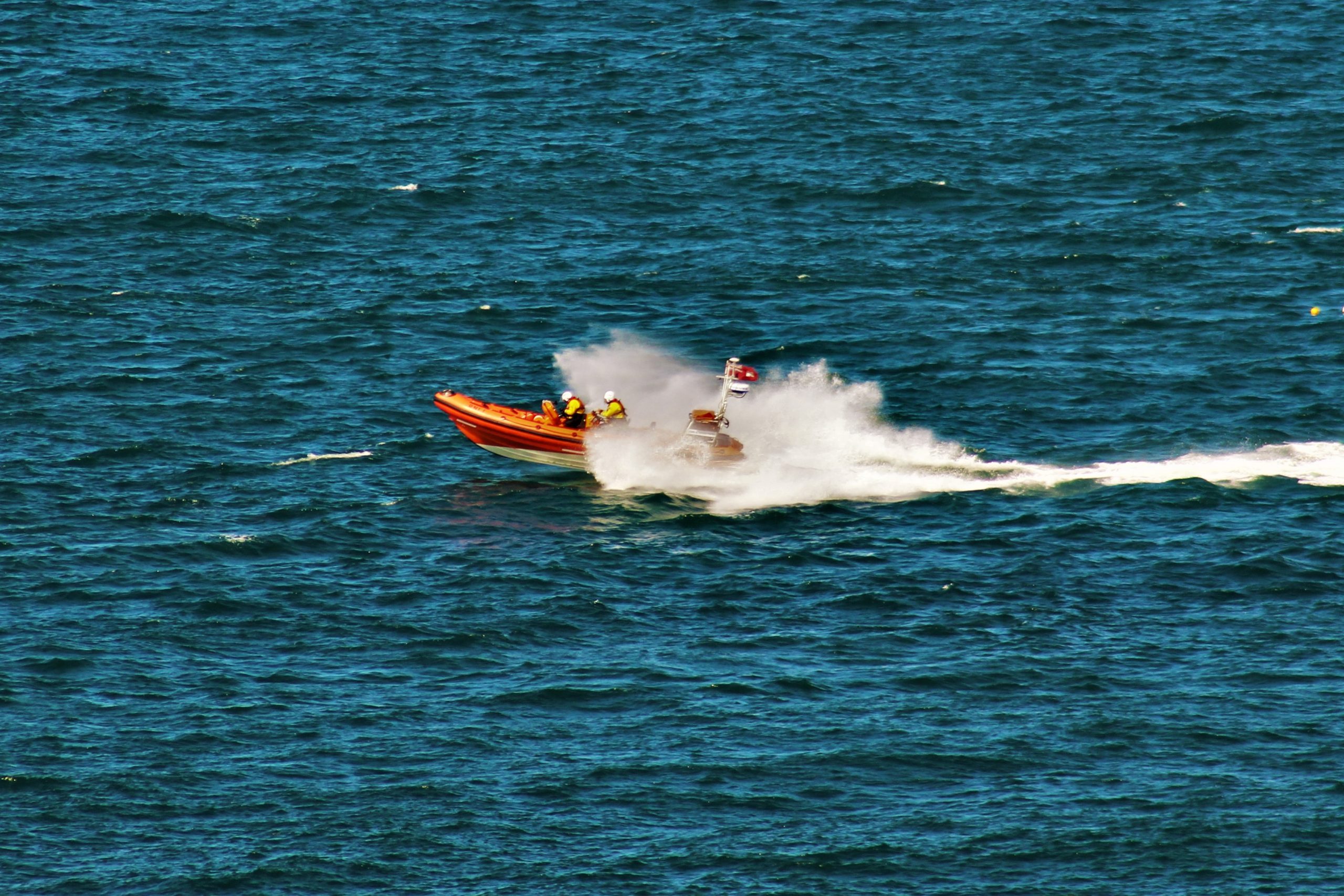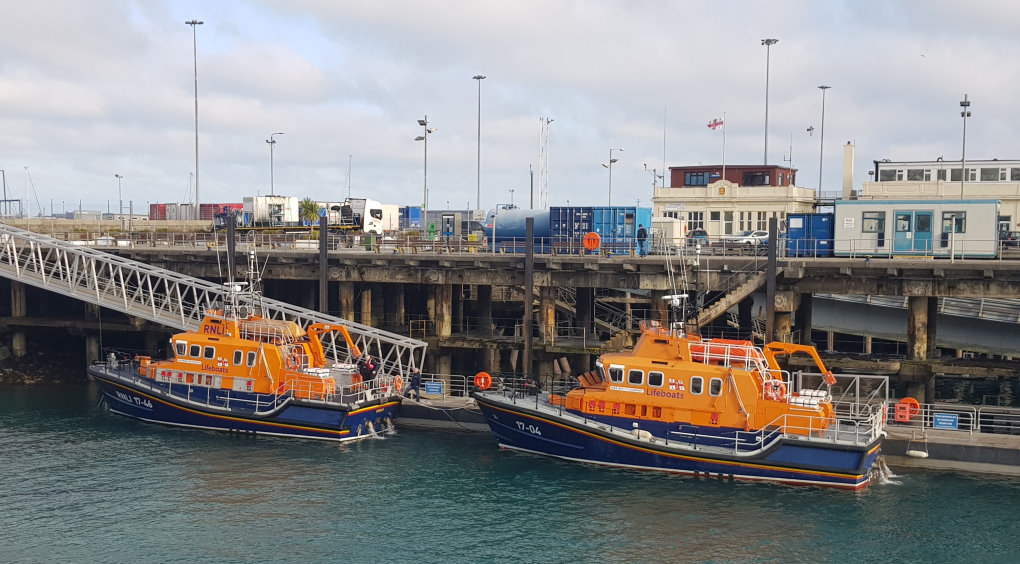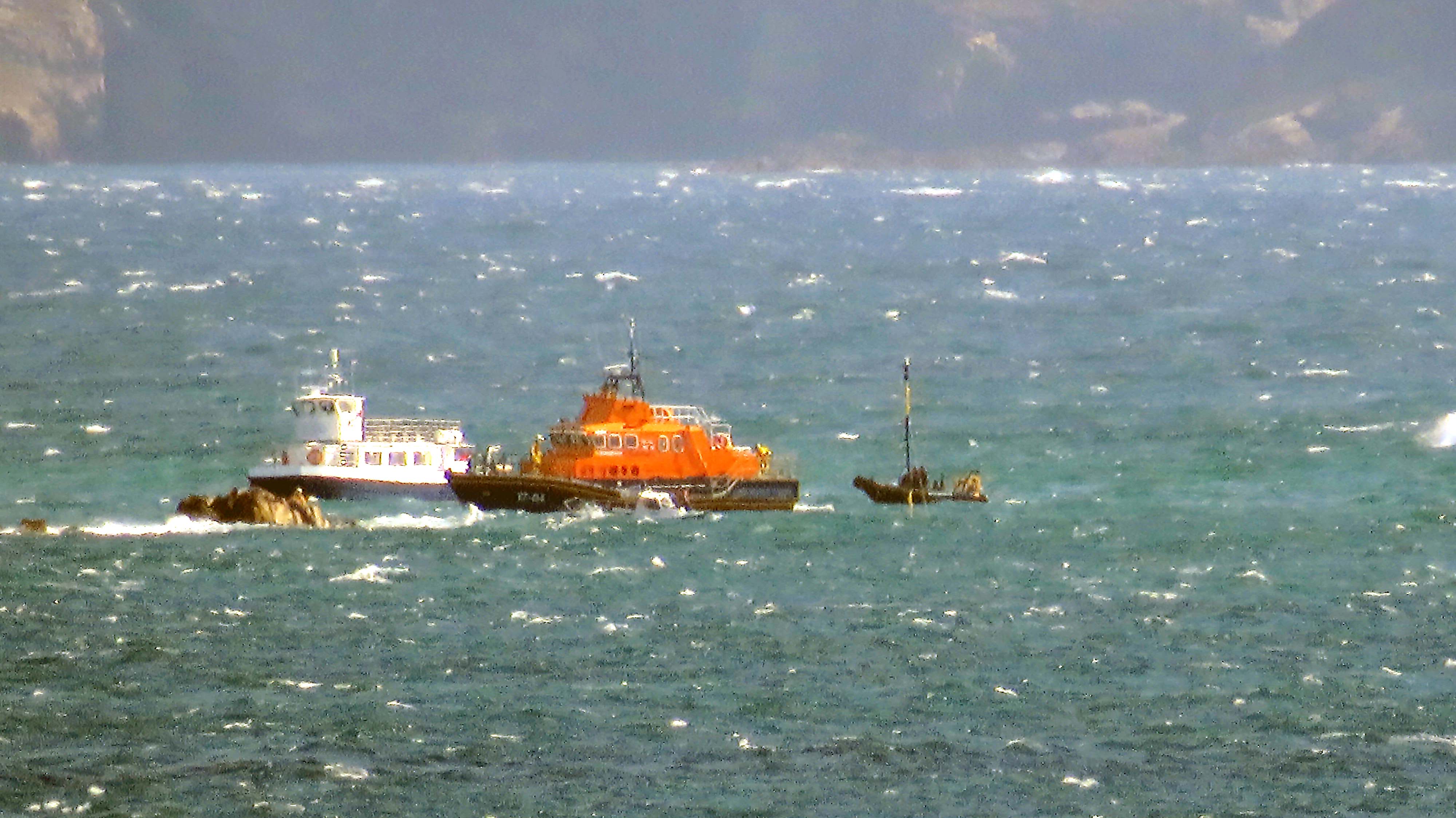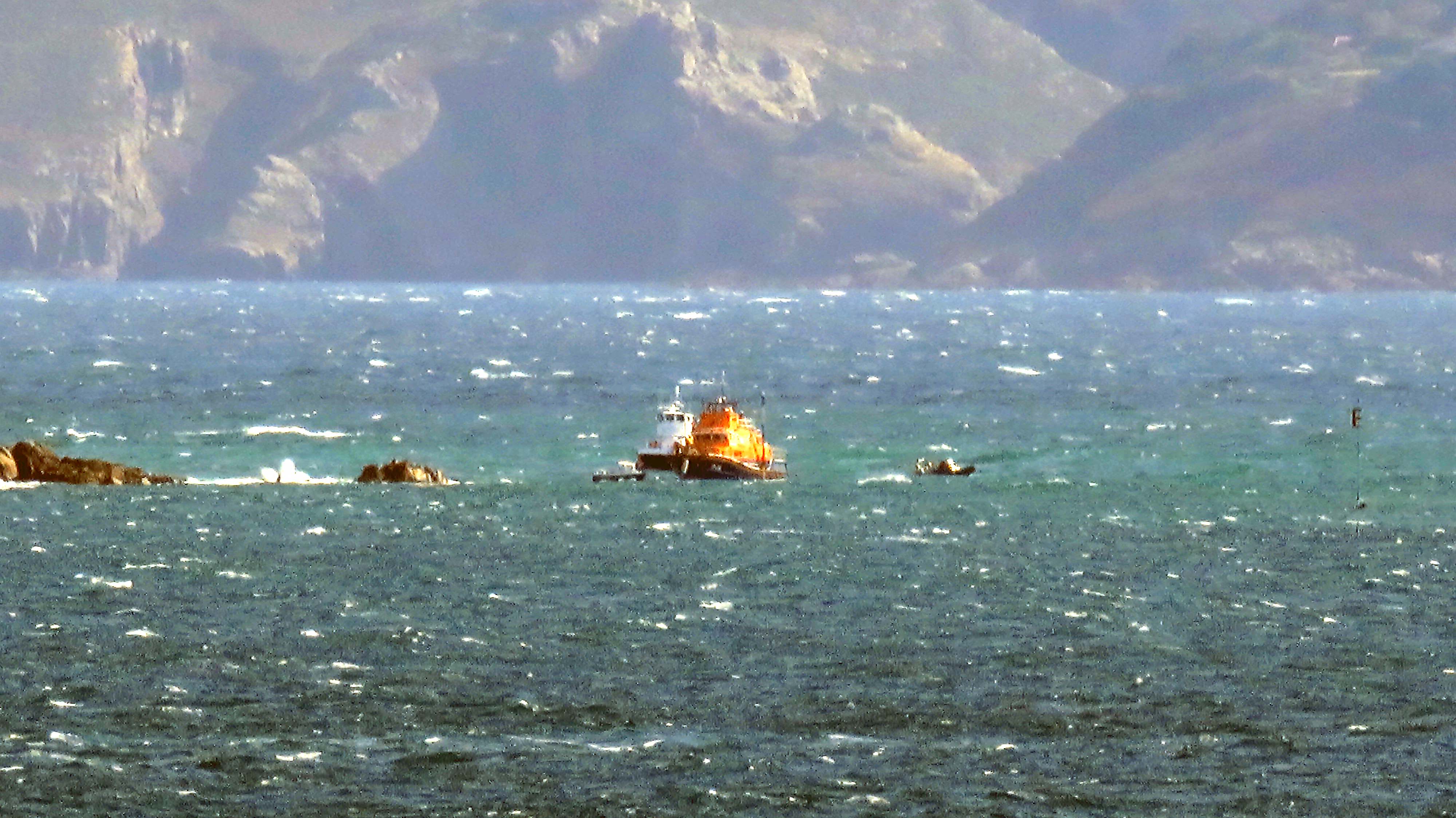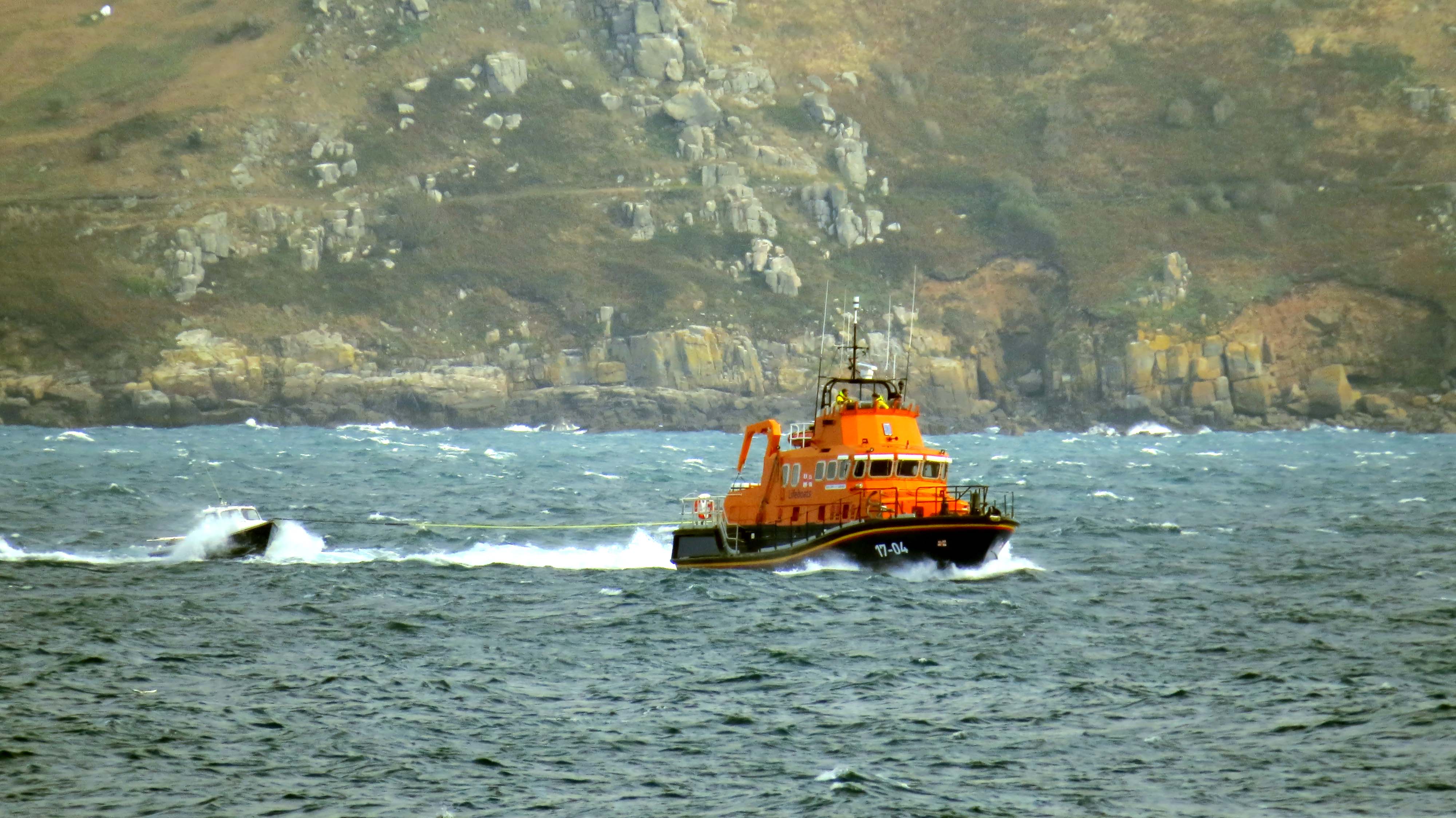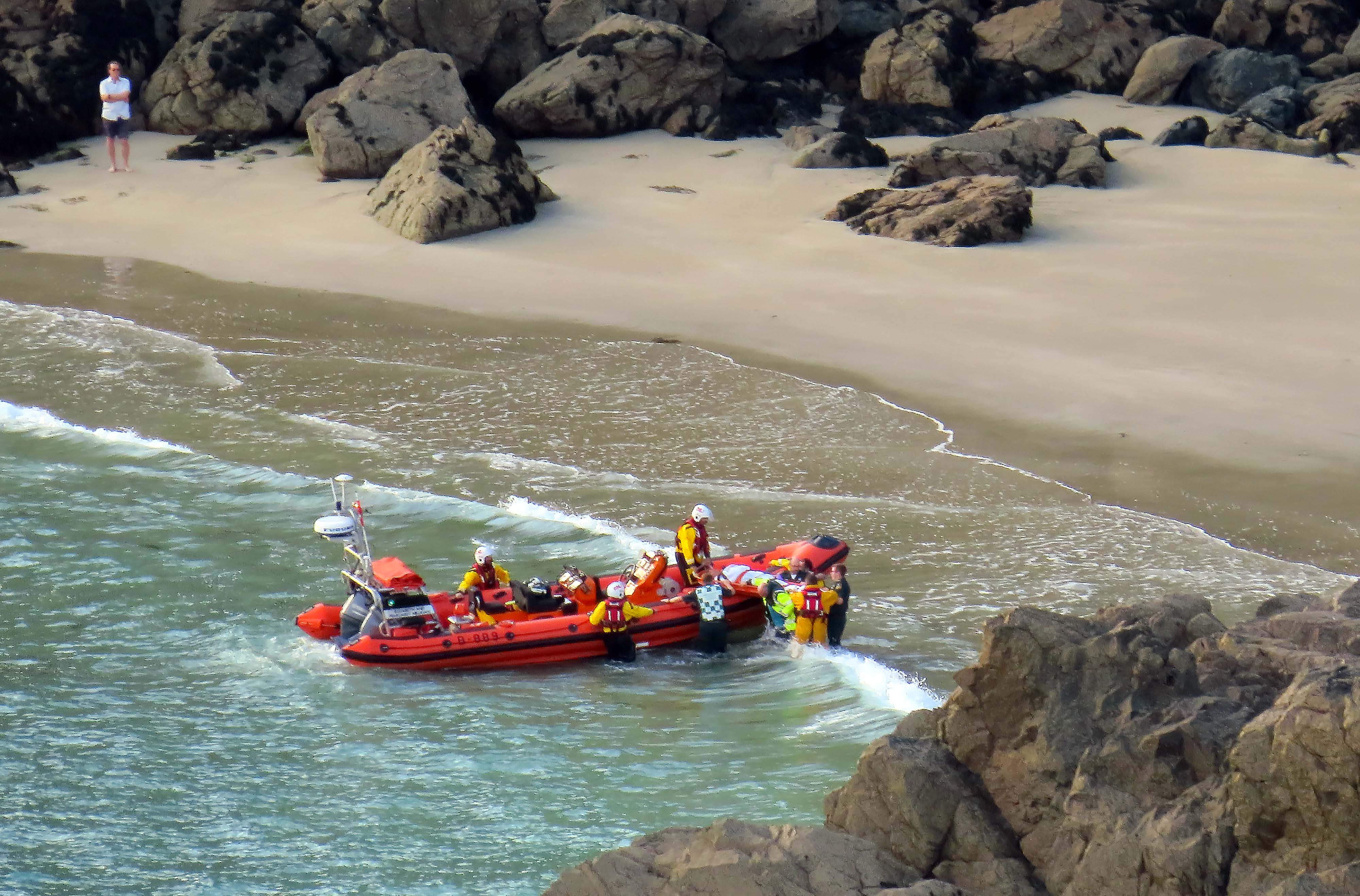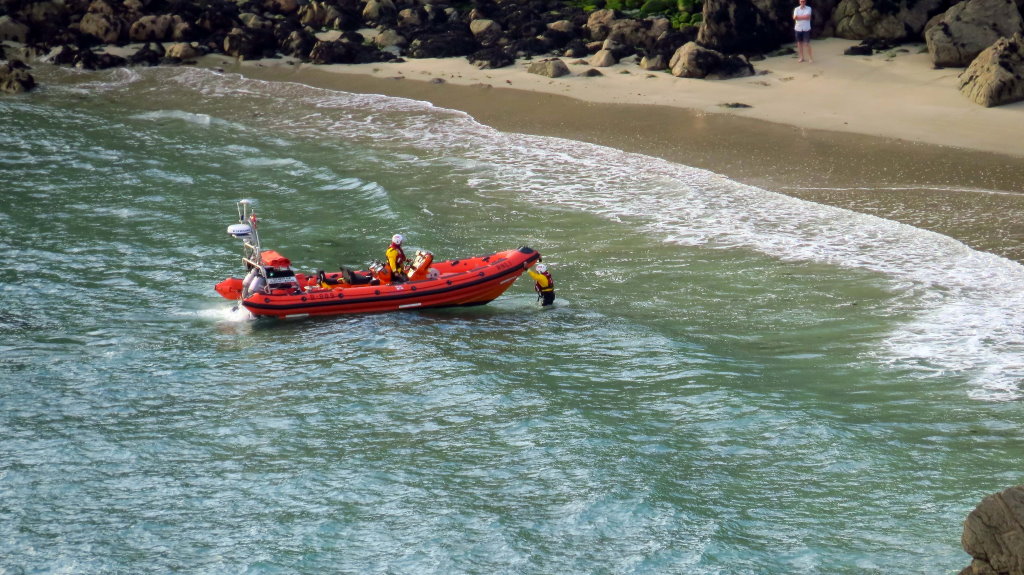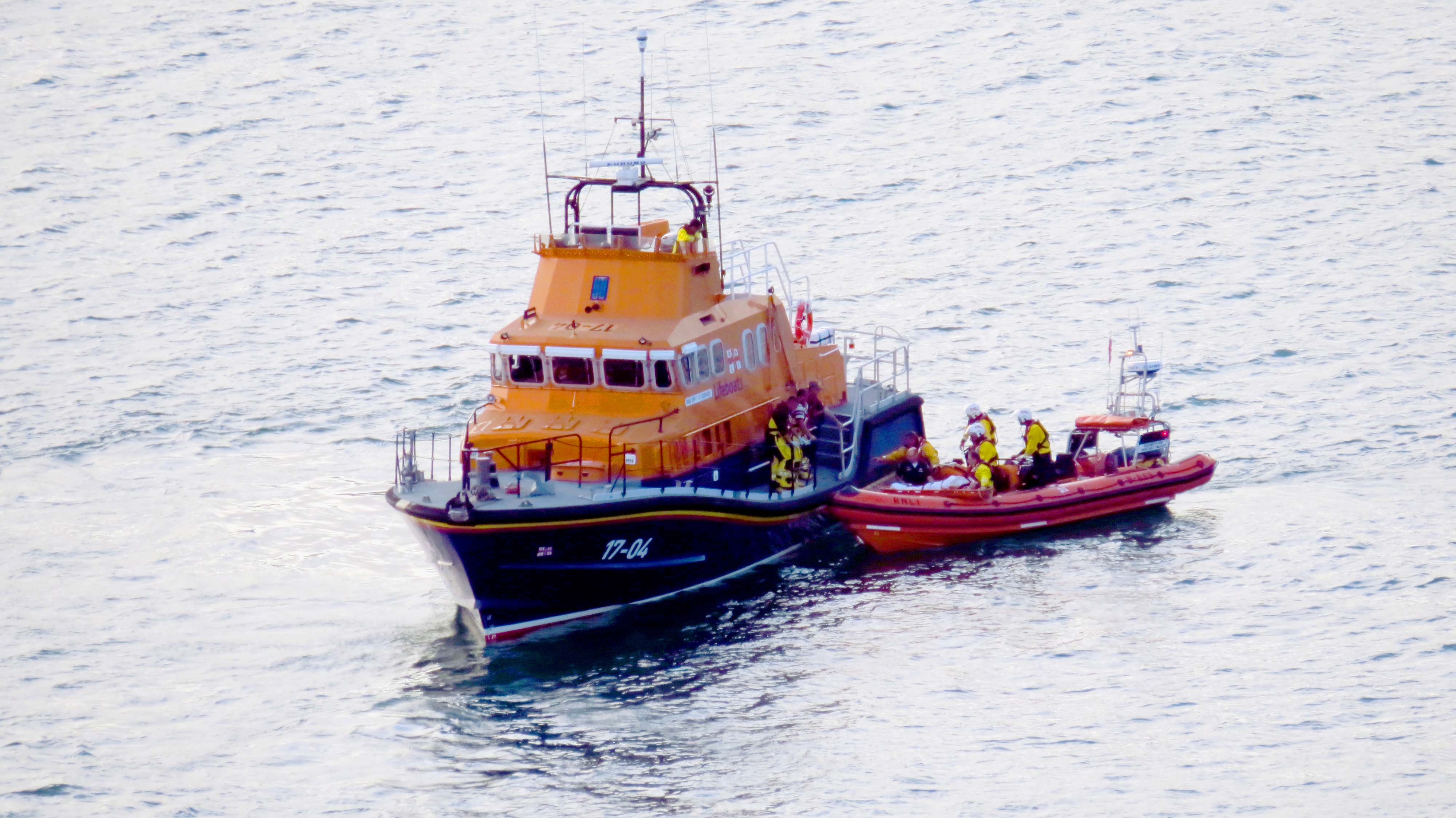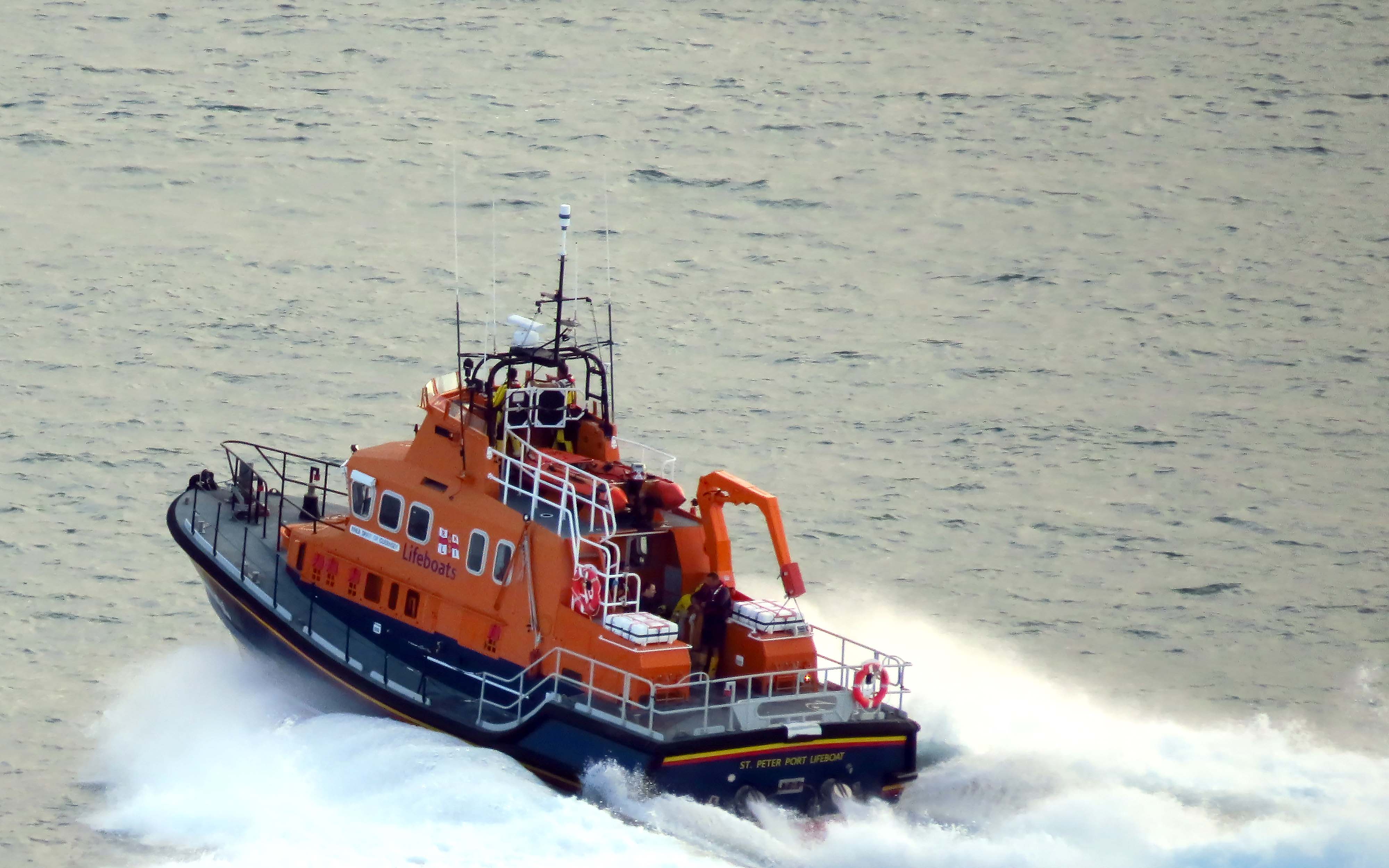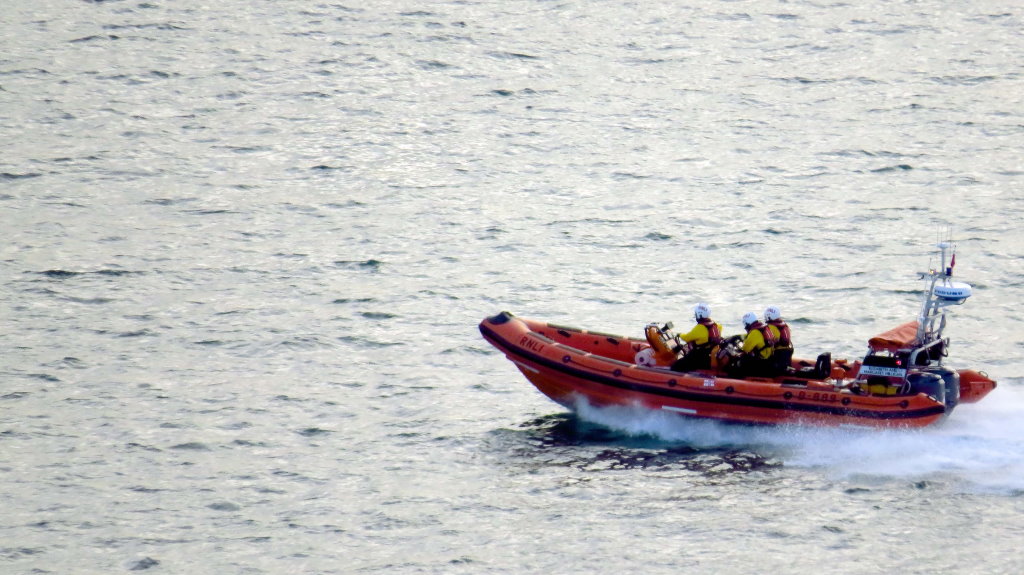On the 40th anniversary of one the RNLI’s most memorable rescues, the former Coxswain of the St Peter Port lifeboat Sir William Arnold has spoken about the night he and his volunteer crew faced hurricane conditions to save the crew and passengers of an 8,000-tonne Ecuadorian cargo ship in the English Channel.
On 13 December 1981, volunteer crew from St Peter Port RNLI Lifeboat Station on Guernsey launched to the rescue of Bonita; an Ecuadorian cargo ship loaded with fertiliser, sailing from Hamburg to Panama, caught in a hurricane in the English Channel.
See https://www.facebook.com/stpeterportlifeboat/videos/445434613695678 for the video
The Bonita had 36 people aboard: Ecuadorian crew members plus engineers and an electrician from Spain and Norway. The Captain and the First Engineer had also welcomed both their wives and children aboard.
The huge waves that were lashing against the Bonita’s port side caused her to list heavily to starboard which shifted the ship’s cargo. She was soon unable to right herself and the ship’s engine lost power.
The RNLI’s volunteers on St Peter Port’s Sir William Arnold lifeboat launched to the cargo ship at 1.23pm after learning the Bonita’s Captain had put out a mayday alert.
Michael Scales, St Peter Port Lifeboat Coxswain at the time, recalls the conditions;
‘Well, that morning was quite horrendous, St Peter Port harbour was closed. We got a call about 1pm, roughly lunchtime, we hadn’t had our lunch yet by the way. St Peter Port had received a mayday, off we set. Shortly after leaving St Peter Port, we broached (keeled over to one side by the force of the wind and sea), and that was the first of many broachings. On the radar, you could just see walls of water.’
Meanwhile, a Royal Navy rescue helicopter had headed to the scene and successfully managed to take four people, including the Captain’s wife and toddler, off the Bonita. However, the helicopter’s rotor blades started to ice up, forcing the aircraft crew to retreat.
Battling 15m waves, the lifeboat crew arrived on scene to find the Bonita now listing at 45°. Despite the shrieking winds around them, the lifeboat volunteers managed to usher the Bonita crew towards the stern of the ship.
Michael continues;
‘The first view of the ship, it was dusk, it’s snowing, the seas were 15 metres high. It’s not until you see the daunting sight of a ship laying on its side knowing the amount of people that have to be rescued and the precarious position they are in, then you have a thought ‘well, how am I going to get these off safely, or as best you can.’
Aboard the Bonita, shock, panic and exhaustion were beginning to take over. Two crew members, including the Second Engineer, had broken legs. Michael Scales brought the lifeboat’s bow alongside the ship and two men successfully jumped aboard from the stern.
Unexpectedly, a third man jumped from the Bonita and mistimed his leap, falling head-first onto the lifeboat and sustaining a serious head injury. He was carried into the wheelhouse where Mechanic Bob Vowles administered first aid.
Following this, Michael was concerned that further attempts would risk all those involved. The new plan was to approach the Bonita head-on and throw a line, so people could attach it to themselves and jump into the sea. The RNLI volunteers could then pull them aboard, to safety.
‘I had great respect for those crew members onboard Bonita who decided ‘well we’re going to jump’ because personally I wouldn’t have liked to.
‘I wasn’t thinking about my state of mind, I was thinking about the state of mind of the people we had to persuade to jump.’
The plan would require great teamwork and boat-handling skills to work. The First Engineer’s wife and two daughters were the first to be pulled aboard but not all the transfers went so smoothly.
Whilst attempting to reach the Sir William Arnold, a man let go of the line after jumping into the sea and had to be pulled aboard by the lifeboat crew. He had stopped breathing but was soon resuscitated by the crew.
Several rescue helicopters were now on scene, but the conditions were too challenging to safely rescue those onboard the Bonita. The Second Engineer, who had broken both his legs, could not make it to the lifeboat. After three attempts, a rescue helicopter managed to hover low enough to secure the injured man and airlift him to hospital.
‘Halfway through, we had 16 people on board, we had a serious injury and the crew were exhausted. I was exhausted because it is concentration. Eventually the master of the Bonita was rescued and then I went ‘oh, thank you God!’.’
Although they had finally reached the safety of the lifeboat’s wheelhouse, the survivors were not home and dry just yet. In total, the RNLI volunteers rescued 29 people, who were then taken to Torbay Lifeboat Station. The lifeboat, her crew and all the casualties of the Bonita reached Devon at 11.13pm, after more than 10 hours at sea.
Sadly, two Bonita crew members were lost during the rescue. The first crew member’s life was lost after he fell and hit the side of the ship during the rescue, killing him instantly. Tragically, the man who had suffered a head wound jumping onto the lifeboat later died in hospital due to his injuries.
In May 1982, the St Peter Port crew attended the RNLI’s Annual Presentation of Awards. Coxswain Michael Scales received a Gold medal for Gallantry while his crew all received a Bronze.
Six days after the Bonita rescue, on 19 December 1981, the Penlee lifeboat crew launched to a coaster, Union Star, which was battling hurricane winds. The crews of both vessels were all lost. It was the worst lifeboat tragedy in living memory.
‘We were at there at the same time as the widows of Penlee receiving their husbands’ or sons’ medals. We took our [RNLI] ties and tied them in a big knot and presented them to the widows as a knot of friendship between the stations.’
This year, Penlee Lifeboat Station marked the event’s 40th anniversary with a flotilla of lifeboats and lay wreaths in memory of the 16 lives lost.
The Sir William Arnold now serves as a floating classroom and museum in London. Owner Colin Trowles restored the lifeboat in hopes to teach visitors about the RNLI and its courageous volunteers.
Michael reflects on the past 40 years, saying; ‘I look at some of the photos, a few of my crew have since passed. I look at 40 years and think, ‘where did that go.’
‘I look at what the RNLI is doing now in their construction, their training, the college and it’s a new generation, but it’s still get out there and save lives.’
This Christmas, many RNLI volunteers will leave their loved ones behind to answer the call, but these rescues would not be possible without donations from the RNLI’s generous supporters.
